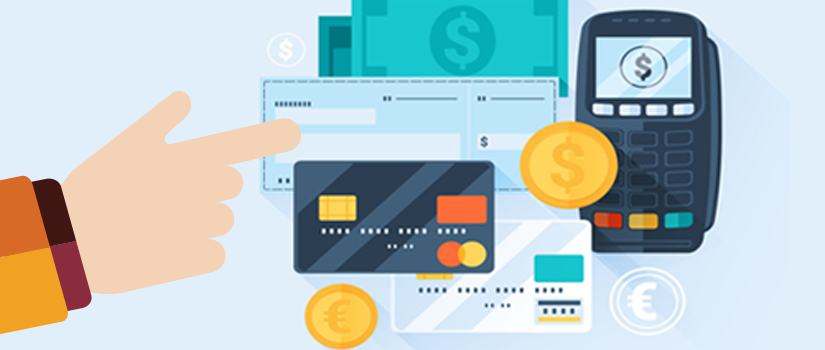Shoppers nowadays have a plethora of choices when it comes to making a payment.
They can use their watch, smartphone, card, face, and fingerprint. With so many options and touchpoints, there also appears to be an increased opportunity for merchants to cater to more customer needs, helping decrease cart abandonment and improve customer retention.
What Is a Payment Method?
A payment method is a way an individual pays for goods and services. The earliest payment methods involved barter, an exchange of goods between two parties. Subsequent evolutions in payment methods involved the use of cash and coins, and credit cards.
In recent times, electronic bank transfers and, to a limited extent, the use of cryptocurrencies, such as Bitcoin, have gained popularity as modes for payment. Each payment method has advantages and disadvantages based on the situation and economic conditions. Depending on the type of payment method, additional charges may be associated.
For example, payments made using credit cards incur fees in the form of processing charges, while those that use cash do not have costs. Recently, as technology solutions increased worldwide, there has been a trend away from cash payments. The Federal Reserve’s 2018 American Payment Study showed that cash payments made up 26% of all incomes in the US, down from 31% in 2016.
Types of Payment Methods
Several types of payment methods are used in society based on the stage of development of a given economy. They can be divided into two payment methods: cash and electronic.
The third type of electronic payment, cryptocurrency payments, is slowly becoming popular and may play an essential role in the future.
Cash
Cash is used to denote paper-based currency and metal coins. It is the most widely-used form of payment method throughout the world currently. A physical number is associated with each cash artifact, representing the value of that artifact.
There are three main advantages to cash. The first one is that it is easy to carry over long distances, allowing the user to conduct trade over geographies. The second advantage of cash is that it is fungible, meaning one unit of money always equals another. The final benefit of cash is that it is anonymous.
While the cash-based currency has serial numbers imprinted on them, it isn’t easy to trace the progression of transactions using cash. Cash has remained the dominant payment method for several centuries, but the advent of electronic payment methods has led to a decline in its use.
An example is Sweden, which is hurtling towards a cashless society. According to statistics, only one percent of its gross domestic product was transacted using cash by September 2020.
An opposite case is Japan, which has a significantly high penetration of electronic payment options and where cryptocurrencies are considered legal tender. According to a November 2019 survey, almost 84% of Japanese citizens use cash for transactions.
Credit Cards
A credit card is a magnetic stripe containing data relating to the card and its owner. It connects electronically to a bank or issuing company’s servers.
Credit cards are the most popular form of electronic cards in use today. Credit card issuing companies pay vendors immediately and later collect from the individual a processing fee. A FICO score, short for Fair Isaac Corporation score, tracks an individual’s history of payments and ability to pay.
The FICO score influences the credit card holder’s credit limit or the amount the issuing company is willing to lend to the cardholder. It is also used in other industries, such as real estate, as a mark of the individual’s credit worthiness. Credit card payments are generally made in two formats.
The first one uses the physical card at a Point of Sale (PoS) system, which connects to a server in the background to verify balance and identity. The second method to use credit cards is online. In this method, physical cards are not required. Instead, credit card details are entered on an ecommerce site, such as Amazon, and used for transactions.
The site uses these details for payments each time a purchase is made. Since the introduction of the first credit card, other variants have been introduced.
For example, debit cards are electronic but connected to a bank account. They have no credit facility, and the user cannot spend more than the amount in their history. Prepaid cards are electronic cards preloaded with specific amounts, and users are not allowed to spend more than that amount.
Electronic Transfers
Electronic transfers can be money transfers accomplished electronically or bank transfers located in two different geographies. In both transfers, an originating party sends money to an Automated Clearing House (ACH), which transfers the required amount to the destination. In electronic bank transfers, a SWIFT routing code is used as the address of a destination bank.
Money transfers are also used as payment methods between businesses. Purely online money transfers can be made using services like PayPal. Services like Western Union do not operate purely online and enable sending of money using cash and offline mode.
Mobile Payments
The rapid proliferation of smartphones has made mobile payments popular, especially in developing countries. Smartphone applications like Venmo in the United States and WeChat in China are popular with millennials as a preferred payment method.
To enable payments via mobile apps should link the account to a bank account or a card. The appropriate amount is debited from bank accounts or cards via mobile payments. In emerging markets, such as India, mobile payments are a crucial factor enabling socio-economic development.
This is because they enable banking and lending services to underserved areas of the population by reducing the infrastructural costs for money management and banking services.
Cryptocurrencies
Cryptocurrencies are the latest payment method. They are an evolution over credit cards because they allow for transferring money and value over electronic networks that span multiple geographies.
For example, non-fungible tokens or NFTs are cryptocurrency types that transfer unique collectibles, such as rare digital artifacts, between two parties. More conventionally, we can use cryptocurrencies like Bitcoin for business transactions between geographies.
Their underlying technology, blockchain, is a tamper-resistant global ledger that can use to minimize conventional transfer fees that such transactions generally incur.
While the share of cryptocurrencies in the overall payment methods pie remains pretty low, it is expected to climb in the future as the technology develops and becomes easier to use.
What is the safest method of payment?
They are the most common payment method, and debit and credit cards are the most secure means of payment. The primary reason is that each card payment must go through a card network such as Visa or Mastercard.
Card networks ensure that the payment is from a valid bank account and that the transaction happens securely. If there is an issue with the amount, the merchant and the customer can contact the card network to resolve the dispute.
What are the different online payment methods?
Online payments are used when the customer is absent, for example, if the store is based online and does not have a brick-and-mortar location. Online payment methods include:
- Direct debits
- Bank transfers
- Mobile payments
- E-wallets
- Payment links
- QR codes
- Digital currencies
- “Buy now, pay later” programs
Why a Business Needs Multiple Global Payment Methods
There are thousands of global payment rules for suppliers across the world. The best payment method typically depends on the supplier’s location and expectations.
A business needs multiple global payment methods because international vendors are looking for a flexible payment experience to best suit their needs. Each type has benefits and drawbacks that can impact both the satisfaction of suppliers and partners and the workload of your finance and accounts payable teams.
A range of payment methods allows global payees to receive their money on time, in their local currency, and with the preferred method. Managing these payments can be a headache for any business owner, but finding the right payout platform makes the job easier.
Giving people a wealth of cross-border payment methods tells payees you are making their comfort and security a priority. Mass payment platforms such as Tipalti allow thousands of payments to be made in minutes while keeping the payer in total tax and regulatory compliance.
Additionally, paper checks are ubiquitous in supplier payments, but they’re far from adequate. Thankfully, from prepaid debit cards to international ACH and wire transfers, there is a world of options.
Is Consolidating Your Payment Methods a Good Idea?
When you decide to invest in a payout platform for your suppliers, you can determine if you’ll limit your payout options to the most basic (e.g., PayPal or check) or offer a variety of payment methods.
While quality global payables platforms support most payment methods, some business owners decide to use only one payment method. This is done mainly to simplify operations in the accounts payable department and reduce workload.
This might seem like an easy way to save time tracking payments online. Still, one major problem with forcing your suppliers to use a single payment method, especially when making cross-border payments, is that some suppliers might not be happy with your chosen method. Thus, you risk losing or alienating your business.
The best way to negotiate a change to your payout system is to ask your suppliers what they think of the idea before you do it. This will help identify issues before they happen. If one or more of your suppliers does not want to change methods, you can keep it uncomplicated with one payout system.
Each method requires a different path for collecting payment details, understanding payment rules, adding or editing data, and the actual funding and remittance operations.
Different portals are sometimes required to interface with the various payment processors. The difficulties of managing multiple methods increase when making mass payments to suppliers and partners.
Add this to the general ledger payment reconciliation complexity after payments are made, and it’s no wonder that networks may limit payment methods.
Conclusion
Supporting multiple international payment methods might seem complicated, but handling mass payments with one platform will keep your business secure, up-to-date, and payee-friendly.




